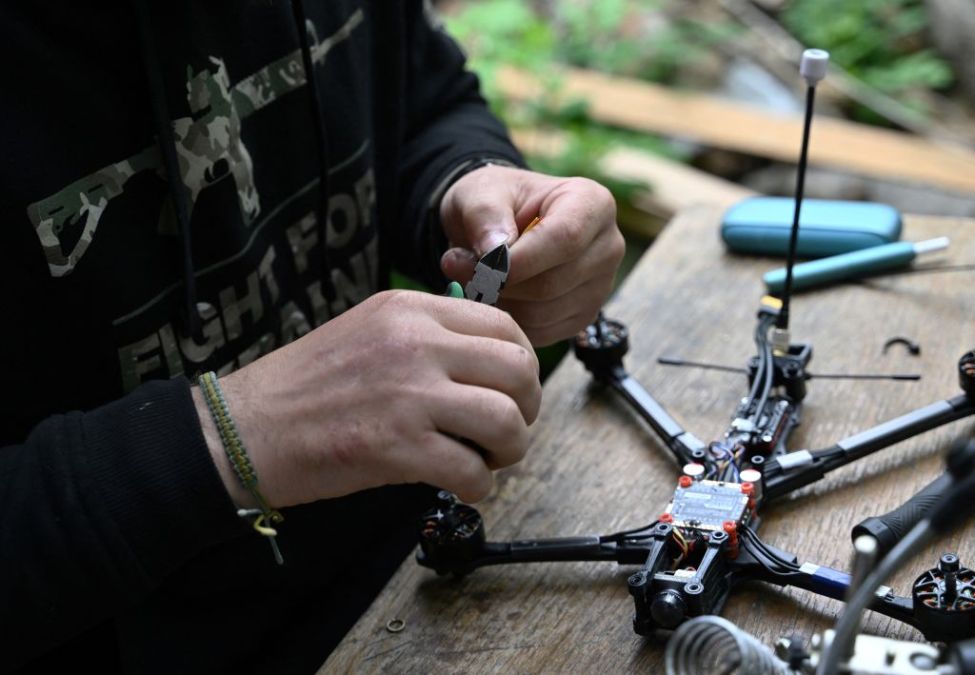Defense Innovation Board taking closer look at escalating military drone challenges

Defense Innovation Board experts might soon conduct new studies delving into complex military drone topics, two officials confirmed following a closed-door meeting this week in which uncrewed systems-related challenges dominated much of the discussion.
During a roundtable with a small group of reporters hosted by the Defense Writers Group shortly after that meeting concluded, DIB members Michael Mullen — a retired Navy admiral and former chairman of the Joint Chief of Staff — and technology investment executive Charles Phillips shed light on what participants addressed behind closed doors.
“For the last hour and a half, we had [conversations with four contractors we met with] that are at various stages and with various capabilities with respect to the drone world, just to review what their challenges were,” Mullen told DefenseScoop at the briefing.
Currently led by businessman and former New York City mayor Michael Bloomberg, the DIB was first set up in 2016 to produce independent recommendations to Defense Department leadership regarding emerging technologies and associated policies and innovative approaches.
“[One] topic to be tackled is a problem getting a lot of coverage in the press. In many cases, U.S.-made drones are failing in the Ukraine as Russia’s brutal invasion grinds on. And so we’ll also be thinking about how the military can develop more effective and less expensive drones, and how we can spur the market to produce a whole heck of a lot more of them. And we’ll be looking forward to getting to work on those potential new studies,” Bloomberg said before concluding the panel’s public meeting on Wednesday.
In the roundtable with reporters, Phillips elaborated on how drone tech was the “one area that kept coming up” during the closed portion of the DIB’s discussion.
“The obvious thing is that the U.S. drones that we’ve sent [over to Ukraine] have not been effective. They’re too expensive. They get jammed all the time. And so, the ones that are working seem to come from other countries. So we have to learn to manufacture them at a much lower cost, not over-spec them, and basically design for the issues that they see on the ground there,” the retired Marine Corps captain explained.
Phillips said part of the meeting focused on ways the U.S. can better build drone technology at scale.
“The inventory levels are low. We’re using 10,000 drones a month in Ukraine. So multiply that — if we get something larger for the U.S., we need hundreds of thousands, or millions over time. And so we need to reset the scale of how we’re thinking about it and then learn to manufacture more cheaply,” he said.
“One of the companies there manufactures composites. And so there’s a better way of manufacturing them to make them cheaper and lighter than we’re doing right now. So, that was another theme,” Phillips added.
Among other topics discussed was how to get drone-makers of all sizes easier access to partnerships or associated pathways for working with Pentagon components.
“One of the drone companies talked about their investment, which was tens of millions of dollars, and in hopes that they believed in what they’re doing and they did a lot of testing on the commercial side for commercial application — but they invested tens of millions in hopes that they would get a contract [with DOD]. There’s a lot of people that just can’t do that. So, how do you close that? And how do you have an understanding about what it takes to run a business, literally inside the [Pentagon] building, particularly as we’ve got to go so quickly now to meet the technological challenges that are at the speed that’s out there?” Mullen said.
In response to follow-up questions on Thursday, a DIB spokesperson noted that the board “held preparatory sessions to inform future work and these sessions are closed to the public.”
“As such we are unable to share the names of the companies” that attended, the official told DefenseScoop.



